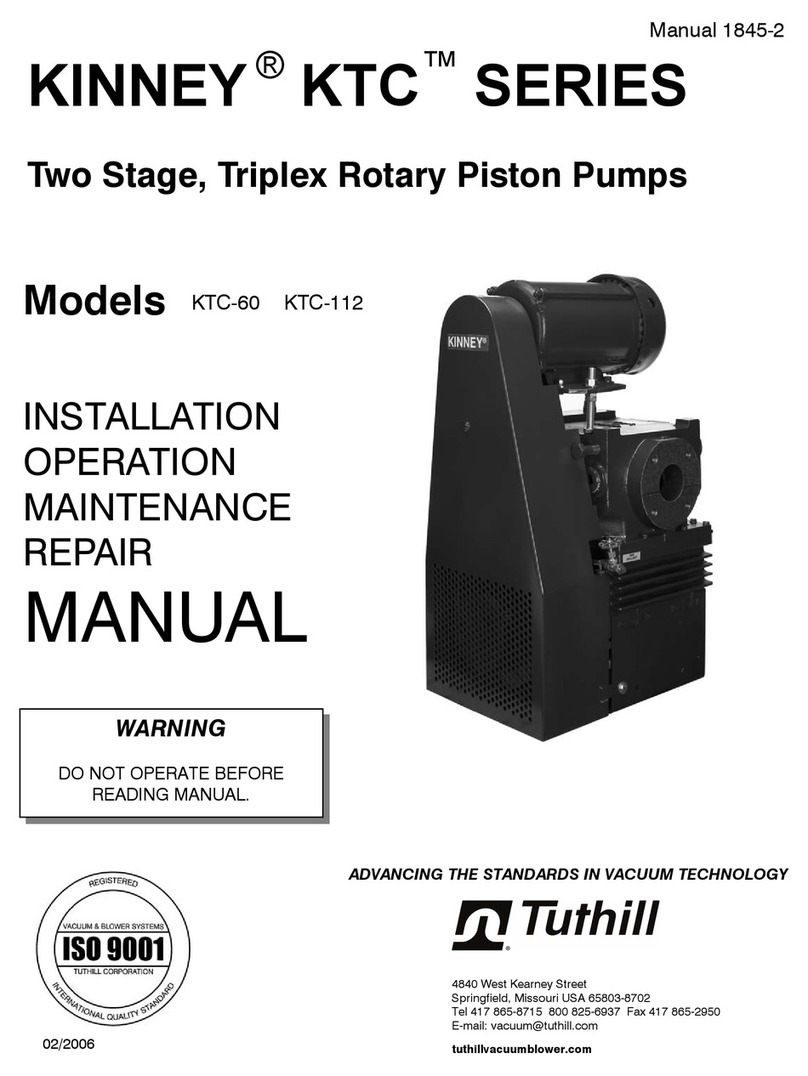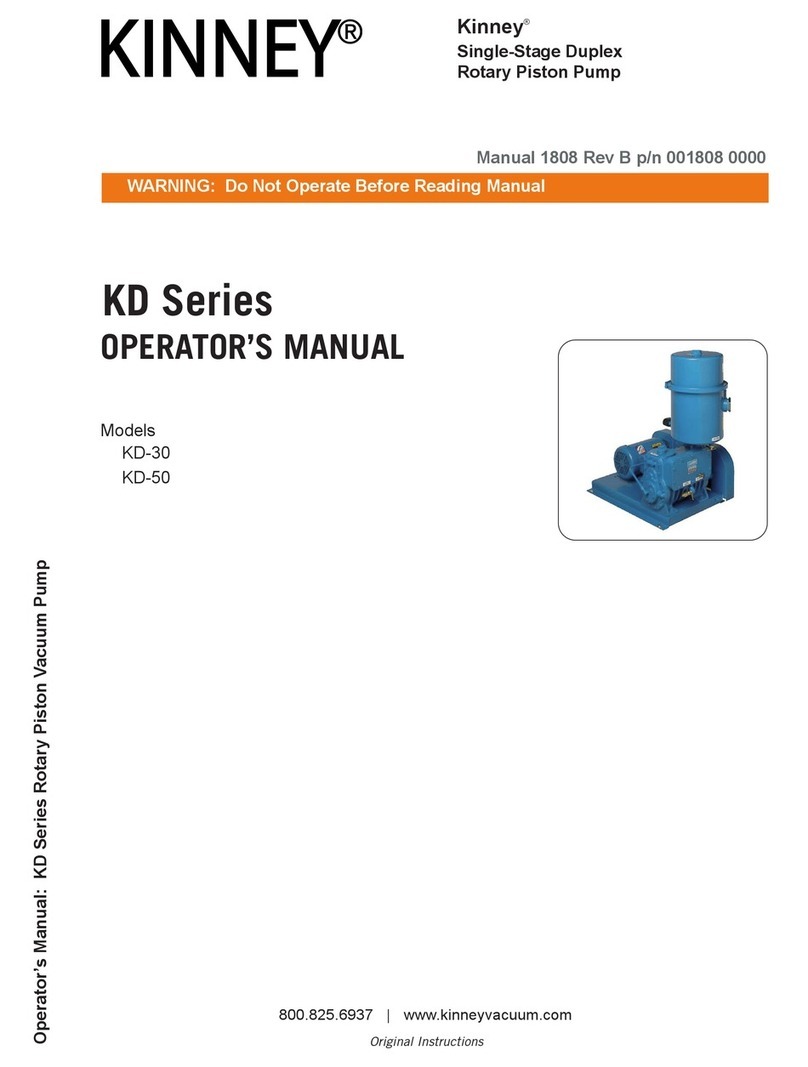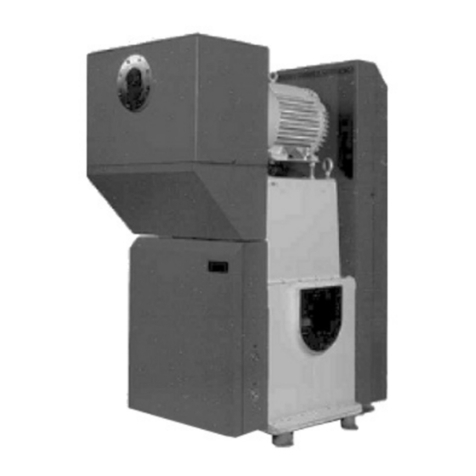
2
NOTICE
The above safety instruction tags were permanently affixed to
your pump prior to shipment. Do not remove, paint over or
obscure in any manner.
Failure to heed these warnings could result in serious bodily
injury to the personnel operating and maintaining this
!WARNING
DO NOT OPERATE
WITHOUT BELT
GUARD
809762-A000
DO NOT VALVE OR RESTRICT PUMP
DISCHARGE OPENING.
USE OIL MIST ELIMINATOR WHEN
OPERATING PUMP. ENSURE ADEQUATE
VENTILATION WHEN DISCHARGING
INDOORS.
REFER TO MANUAL SAFETY INSTRUCTIONS.
!CAUTION
SAFETY PRECAUTIONS FOR ROTARY PISTON PUMPS
Please read the following safety information on this page before operating your vacuum pump.
•Do not operate the pump without the belt guard properly attached. Disconnect the pump motor from the electrical
supply at the main disconnect before removing the belt guard. Replace the belt guard before reconnecting the
power supply to the pump motor. Operating the pump without the belt guard properly installed exposes personnel
in the vicinity of the pump to risk from rotating drive components.
•Do not operate the pump with oxygen-enriched gas (greater than 20% by volume) in the suction line, unless the
pump has been prepared with an inert fluid suitable for the application.
Pumping oxygen-enriched gases with mineral oil or other non-inert fluids can cause fire or explosion in the
pump, resulting in damage or serious bodily injury.
•Take precautions to avoid prolonged or excessive exposure to oil mist or process materials emanating from the
discharge of the pump.
•Do not allow the pump to discharge into a closed, or inadequately ventilated room. Always use a discharge oil mist
eliminator unless the pump discharge is discharged to outside atmosphere. Laws and ordinances may pertain to
your local area regarding discharge of oil mist or vapor to atmosphere. Check local laws and ordinances prior to
operation of the pump with discharge to outside atmosphere. Venting of the discharge of an oil mist eliminator to
outside atmosphere is highly recommended.
•Do not restrict the pump discharge in any way, or place valves in the discharge line. The vacuum pump is a
compressor and will generate high pressures without stalling the motor when operated at low suction pressures.
Excessive pressure could cause damage or serious bodily injury.
•Disconnect the pump motor from the electrical supply at the main disconnect before disassembling or servicing
the pump. Make sure pump is completely reassembled, the belt guard is properly installed, and that all fill and
drain valves are installed and closed before reconnecting the power supply. Accidental starting or operation of
the pump while maintenance is in progress could cause damage or serious bodily injury.
•Lift pump only by the lifting lugs supplied with the pump. DO NOT lift equipment attached to pump by the pump
lifting lugs.
•Do not touch hot surfaces on the pump. In normal operation at low pressures, surface temperatures will not
normally exceed 180° F (82° C). Prolonged operation at 200 Torr (267 mbar a) may cause surface temperatures as
high as 220° F (104° C)




































